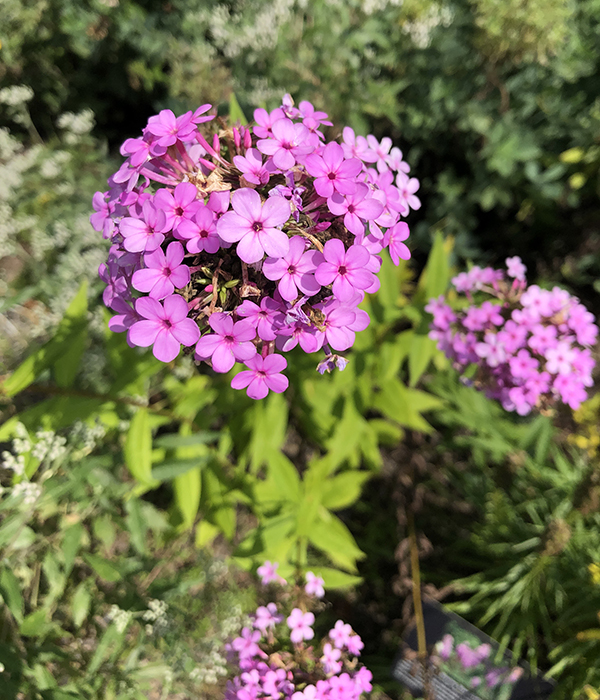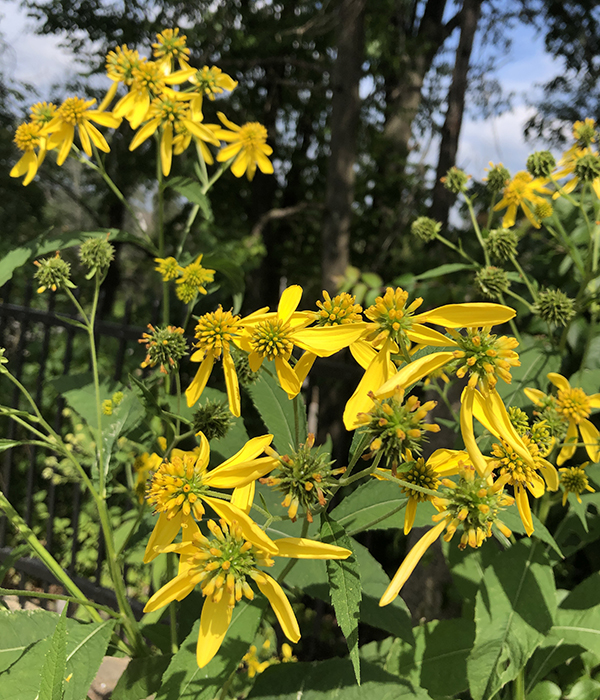
September 14, 2023| Education, Environment, LHF Environmental & Cultural Center
By: Marty and Laurie Kane
As the summer season starts to fade, many plants in our native gardens are beginning to go to seed, but several varieties continue to burst forth with color. These beautiful late-blooming varieties are still attracting butterflies and bees to our gardens and we are excited to showcase two of the remarkable native plants that are currently gracing our grounds with their delicate blooms.
 |
 |
| wingstem | garden phlox |
Not often used in the home garden, Wingstem (Verbesina alternifolia), also known as yellow ironweed, is becoming one of our favorites in our gardens. It is a member of the aster family and features clusters of perky yellow flowers often compared to pin cushions from August to October. Considered deer-resistant, this is a tall plant that can reach 6 feet or more. A favorite plant of bees, it also attracts butterflies and native birds, including goldfinches. Wingstem does well in full sun to partial shade and will reseed and spread. It is a host plant for the silvery checkerspot butterfly, summer azure butterfly, and gold moth. Native Americans used wingstem as a remedy for gastrointestinal issues and as an external treatment for joint pain.
While we grow three different native phlox varieties in the LHF native gardens, garden phlox (Phlox paniculata), also known as summer or fall phlox, is the one currently in abundant bloom. This showy plant grows two to four feet tall and has deep green foliage topped by conical lavender-pink flower clusters during late summer and fall. The fragrant flowers attract bees, butterflies, and hummingbirds - and deer. Garden phlox is popular for many gardeners due to its long blooming season and excellence as a cut flower. Garden phlox will do well in full sun to partial shade. Varieties of phlox were among the first native wildflowers in America to be collected by European explorers and exported back to Europe, and were particularly popular in Victorian England.
Please stop by our gardens at 125 Landing Road, Landing, and enjoy a look. You may find a new variety to try in your own garden next season!